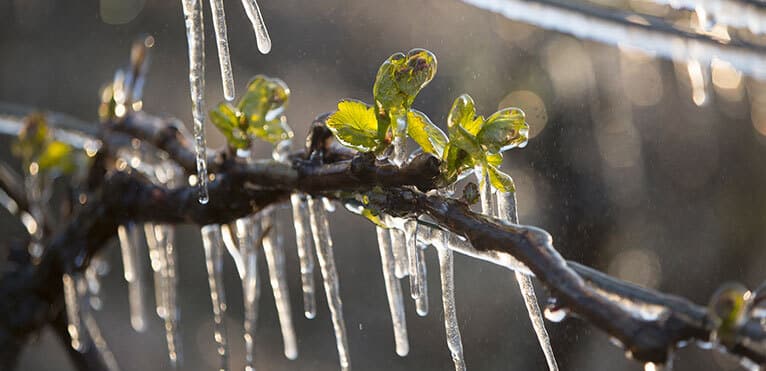
Contents
A weather phenomenon with costly consequences
Spring frosts are late frosts that generally occur between April and May (in the northern hemisphere). These occur on the buds of fruit trees, including vines.
This late frost poses a problem because the vine bud has already budded and no longer has its protective shell. With low humidity (less than 60%), the risk is slight above -4°, but with high humidity (over 60%), damage can occur as early as -2°.
The vines are not destroyed by frost, but the vulnerable buds are attacked by the cold and cannot develop into grapes, destroying the annual harvest. The frost can also act as a magnifying glass, focusing the sun’s rays on the bud, burning it as it is unprotected.
How can we combat this phenomenon?
Fortunately, winegrowers’ experience has enabled them to establish several solutions to combat spring frost.
First of all, you need to anticipate the weather forecast using a barometer or weather station. This is the first step in the fight against frost, saving time and enabling the vines to be protected in a variety of ways.
The air can then be heated. For example, sprinkling water on the vine at the moment of frost formation creates an icy envelope around the bud to prevent it from freezing (similar to an igloo). Winegrowers can also place candles and/or heaters in the rows between the vines to keep the vines warm enough to prevent frost.
The last solution is to install antifreeze towers. Fitted with propellers, they direct hot air towards the vines. This air circulation above the vines is very practical, but the system is much more expensive than using candles or spraying.